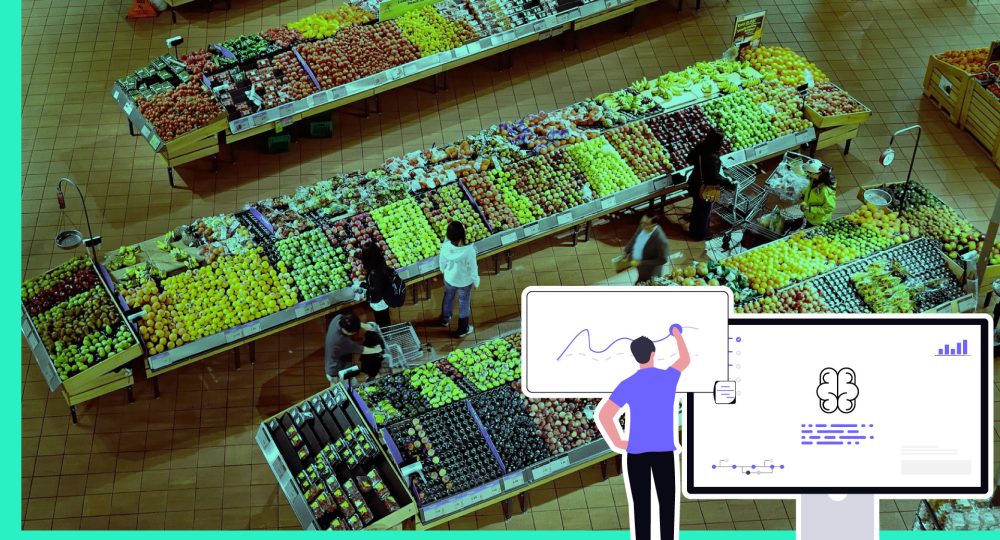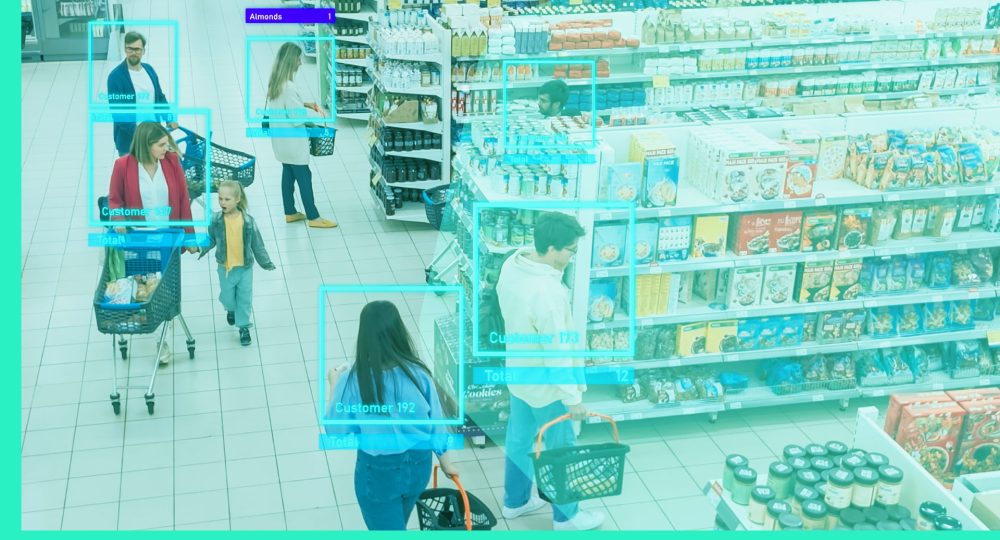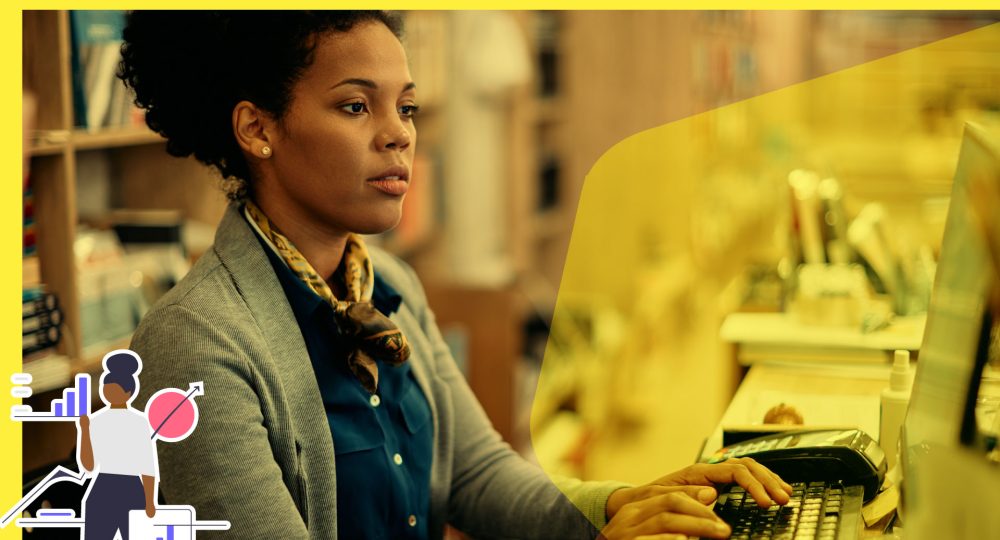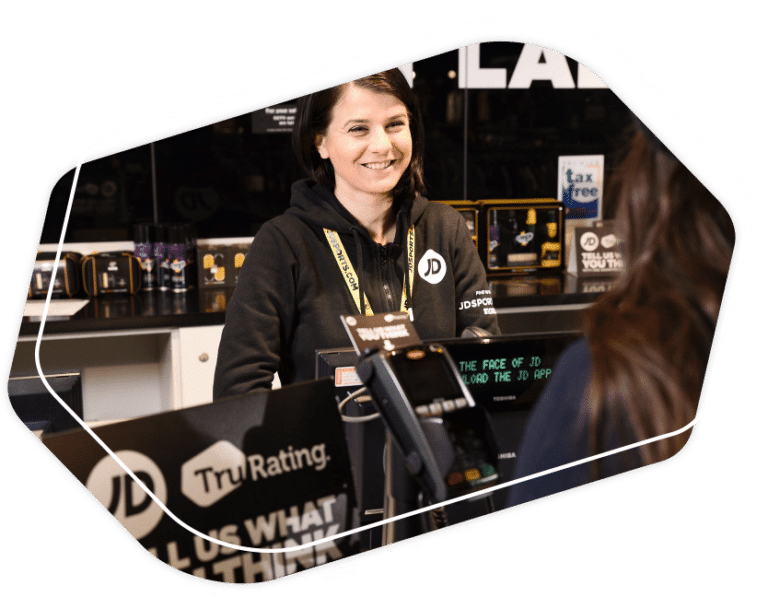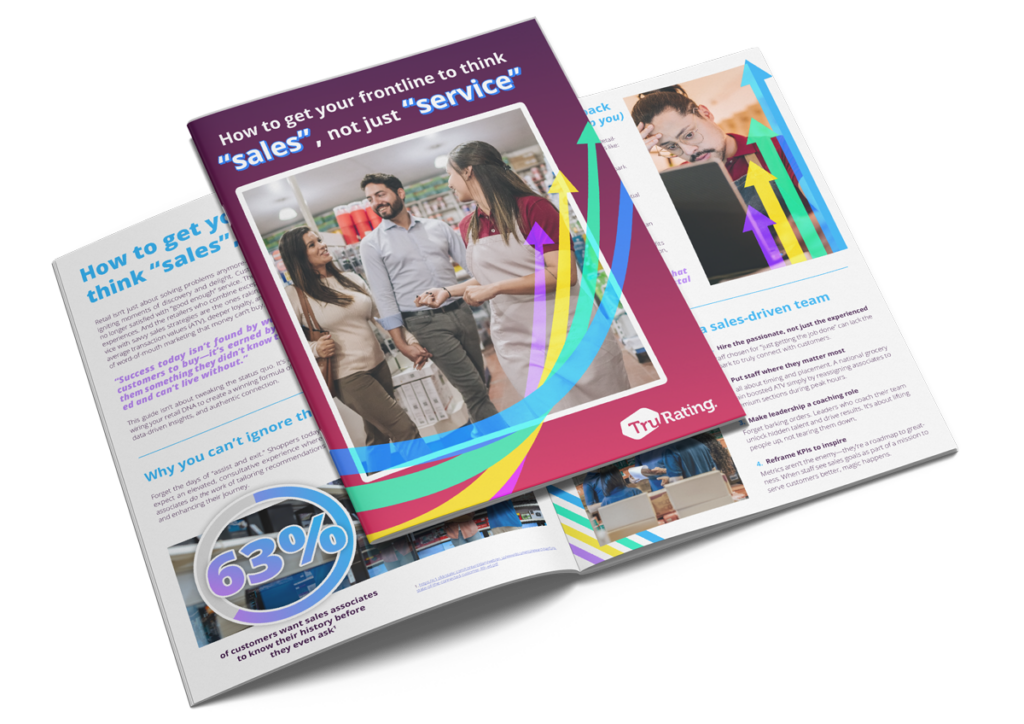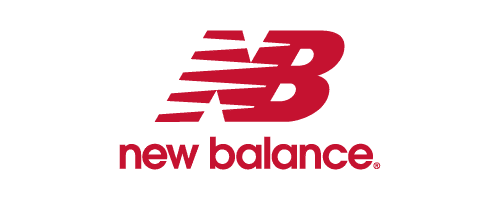
Retail has entered a new era, one where retail store staff training is no longer an operational checkbox but a strategic pillar of brand performance. With customer expectations rising and tolerance for poor experiences shrinking, frontline execution has become one of the most powerful levers retailers have to protect revenue, earn loyalty, and differentiate in an increasingly competitive market. According to an Emplifi study, 70% of consumers will abandon a brand after just two negative experiences, and nearly a quarter will do so after only one.
Inconsistent service isn’t just inconvenient. It’s a direct risk to sales, reputation, and long-term customer value. Every frontline interaction now influences measurable outcomes like conversion rate, sales per hour, ATV, and overall retail staff productivity. Yet many retailers still rely on outdated, one-and-done training approaches that fail to influence the real behaviors driving performance. Modern retail demands continuous, data-driven coaching for retail employees, powered by real-time customer insight and delivered in a rhythm that fits the pace of store operations.
This article explores why retail staff training must evolve, the skills and behaviors frontline teams need to succeed, how to build a training system that boosts measurable KPIs, and how real-time customer feedback enables smarter coaching.
The importance of staff training in retail
Investing in staff training is no longer optional; it’s essential. Statistics show that 59% of employees lack formal workplace training and often rely on self-taught skills. This gap can significantly affect your retail business, as trained employees improve customer engagement, increase retention rates, and foster a culture of innovation.
Additionally, organizations with strong learning cultures experience up to a 57% increase in retention rates. This demonstrates that training not only enhances skills but also keeps employees motivated and committed to your store’s success.
Investing in training reduces the costs associated with hiring and onboarding new employees while ensuring that your team is well-prepared to deliver excellent service.
What customers expect from retail staff
Modern customers come to retail stores with high expectations. According to PwC, 73% of consumers say a positive customer experience is key to their purchasing decisions. Retail staff are central to meeting these expectations, and training plays a key role in preparing them. Here’s what customers expect:
- Personalized assistance that includes remembering preferences, asking thoughtful questions, and suggesting products tailored to individual needs.
- Expert product knowledge to confidently explain key features, highlight discounts, and compare options to guide customer decision-making.
- Proactive support that anticipates needs, recommends complementary items, and tactfully checks in during the shopping experience.
- Efficient service that reduces wait times, resolves issues promptly, and communicates updates clearly, ensuring a smooth interaction.
- Empathy and understanding demonstrated through attentive listening, supportive language, and adapting approaches to customer emotions.
- A welcoming atmosphere created by friendly staff, an organized store environment, and enthusiastic service.
Customer service training for retail staff
Training retail staff in customer service equips them with the skills to handle the range of expectations mentioned above, ensuring every customer leaves the store with a positive impression. Here are the key components to focus on when training your team:
1. Effective communication skills
Strong communication is vital for delivering excellent service. Staff should be trained to:
- Use friendly, professional language when addressing customers.
- Listen actively to understand customer needs and concerns.
- Adjust their tone and approach based on the customer’s mood or situation.
2. Problem-solving and conflict resolution
Retail employees frequently encounter challenges, from product complaints to difficult customers. Training should include:
- Techniques for de-escalating tense situations.
- Strategies to provide quick, effective solutions.
- Knowing when to involve a manager for more complex issues.
3. Product knowledge and expertise
Customers expect staff to know the ins and outs of the store’s offerings. Training should focus on:
- Familiarizing employees with product features, uses, and benefits.
- Educating them about current promotions and policies.
- Empowering staff to confidently compare options and recommend solutions.
4. Empathy and patience
Retail often involves interacting with frustrated or indecisive customers. To handle these situations, staff need:
- Empathy to connect with the customer’s perspective.
- Patience to remain calm and composed, even during challenging interactions.
5. Proactive engagement
Encouraging staff to anticipate customer needs can elevate the shopping experience. Training should cover:
- Approaching customers with open-ended questions, such as, “How can I assist you today?”
- Offering additional recommendations based on observed needs.
- Recognizing when to step in without overwhelming the customer.
Retail staff training plan
A well-structured retail staff training plan can provide your employees with the skills and knowledge necessary to excel in a retail environment. This plan ensures that staff are prepared to deliver excellent customer service, operate efficiently, and contribute to your business’s success. We have outlined the key elements of an effective training plan, which will also help enhance the customer experience:
1. Onboarding new employees
The onboarding process sets the stage for a new hire’s experience. This includes introducing them to the store’s culture, policies, and systems. From understanding store procedures to learning the basics of the technology used at checkout, onboarding is the foundation for long-term success.
2. Customer service skills
As we discussed earlier, it’s important to train employees on how to interact with customers. This training should focus on teaching them how to give customers the best experience, covering the five areas above. Remember that strong interpersonal skills are important for creating memorable shopping experiences.
3. Sales techniques
Selling, upselling, and cross-selling are valuable strategies for boosting sales. Training staff to tactfully suggest complementary or premium products ensures they can maximize each transaction while maintaining a positive customer experience.
4. Building product knowledge
Employees need to understand products’ features and benefits to effectively sell, upsell, and cross-sell products. By familiarizing staff with your store’s inventory and how it compares to competitors and related items, you can enable them to answer customer questions and offer recommendations confidently.
5. Technology training
Modern retail relies heavily on technology, and staff must be equipped to navigate tools like POS systems and inventory management software. Training employees on these systems increases efficiency and reduces errors.
6. Health and safety training
Safety in the workplace is a top priority. Training employees on emergency protocols, workplace safety, and any relevant health measures ensures the well-being of both staff and customers.
7. Ongoing learning opportunities
Training should be a continuous process. Regular workshops, refresher courses, and opportunities to develop advanced skills keep your staff motivated and informed about the latest retail practices.
A well-structured retail staff training plan is essential, but it won’t deliver meaningful results without consistent, real-world application on the shop floor. True performance improvement requires continuous coaching for retail employees, real-time visibility into how training is being adopted, and a clear link between frontline behaviors and revenue outcomes. Without ongoing reinforcement and accountability, even the best-designed training plan becomes just another manual, rather than a driver of measurable performance gains.
How to motivate staff in retail
Motivation is one of the most powerful (and most overlooked) drivers of retail staff productivity. Even the strongest retail employee training program will fall flat if teams feel undervalued, unclear on expectations, or disconnected from the store’s goals. Frontline employees operate in high-pressure environments with constant customer interaction, unpredictable footfall, and the pressure to meet sales targets. Without intentional motivation strategies, performance becomes inconsistent and turnover remains high.
You need to treat motivation not as a “soft skill,” but as a structured component of your retail staff training strategy. Here’s how leading brands build motivated, high-performing teams:
1. Recognition that reinforces the right behaviors
Employees want to know their work matters. Recognition is most powerful when it is:
- Immediate — celebrated on the same day or shift
- Specific — tied to behaviors that improve ATV, conversion rate, or customer satisfaction
- Public — shared in team huddles or on digital leaderboards
Recognising frontline excellence isn’t just good culture—it is one of the most effective ways to improve retail staff performance by reinforcing exactly what success looks like.
2. Performance-based rewards that drive outcomes
Motivation increases when employees see a clear, fair connection between their actions and their rewards. Effective reward programs include:
- Incentives tied to KPIs like sales per hour, ATV, or customer ratings
- Monthly or weekly bonuses for top performers
- Gift cards, shift preferences, or early access to new products
- “Surprise and delight” rewards for consistent service excellence
Retailers that do this well create a culture where employees push for continuous improvement—not because they’re pressured, but because they’re recognized for their impact.
3. Empowerment through ownership and autonomy
- Empowered employees perform better because they feel trusted. This means:
- Allowing frontline teams to make small, customer-centric decisions
- Involving staff in solving operational challenges
- Asking for employee input on merchandising, store layout, or workflow
- Giving teams visibility into store performance metrics
When staff understand how their role influences results, motivation becomes intrinsic. This is a core principle behind modern coaching for retail employees, give people the “why” behind the work.
4. Clear expectations and consistent coaching
Lack of clarity is one of the biggest demotivators in frontline retail. Employees want to know:
- What is expected of them
- How success is measured
- How they are performing today
- What they can do next to improve
This is where ongoing coaching (not just training) makes a difference. Weekly or shift-level feedback keeps teams aligned, confident, and focused. Retailers who invest in continuous coaching, rather than one-off sessions, see stronger performance and lower turnover.
5. A culture of support and psychological safety
Retail environments can be emotionally demanding. Employees are more motivated when they feel:
- Supported by their managers
- Safe to ask questions or admit mistakes
- Comfortable escalating customer issues
- Connected to their team and store goals
Motivated teams deliver better service, execute more consistently, and demonstrate higher resilience during busy periods.
When motivation is embedded into the daily rhythm of store operations, you will see measurable improvements in sales. This is why many retail leaders integrate motivation directly into their retail employee training programs, because motivated staff drive results.
How to calculate staff productivity in retail
Calculating staff productivity is an essential part of retail management and a key way to understand whether your retail employee training and coaching efforts are actually improving performance. In retail, productivity is often measured through KPIs such as sales figures, customer interactions, and operational efficiency. Below are the foundational metrics every retailer should use, and how TruRating enhances them by connecting customer feedback directly to transaction-level data.
Sales per Hour
One of the simplest and most effective metrics, sales per hour measures the revenue generated by an employee within a specific time frame. It’s calculated as:
Sales per Hour = Total Sales / Total Hours Worked.
For example, if an employee generates $1,000 in sales during an 8-hour shift, their sales per hour is $125.
Conversion Rate
This measures how many customers make purchases after interacting with an employee. It’s calculated as:
Conversion Rate = (Number of Transactions / Number of Interactions) × 100
A higher conversion rate indicates that employees are effective at turning browsers into buyers.
Average Transaction Value (ATV)
This tracks the average number of items or total value per transaction, which reflects upselling and cross-selling efforts. It’s calculated as:
ATV = Total Sales / Number of Transactions
If a team member consistently increases the basket size, they are demonstrating strong sales skills.
Customer feedback and ratings
Staff productivity isn’t just about sales. It’s also about how customers feel during each interaction. Metrics such as customer satisfaction scores, service ratings, and behavioral feedback provide essential insight into the quality of engagement delivered by frontline teams. This is where TruRating provides a unique competitive advantage.
Because customers answer a single question at the point of payment, TruRating reveals whether key service behaviors occurred during that visit, and whether they influenced the sale. Retailers can measure behaviors like:
- Greeting: “Were you greeted warmly today?”
- Offering assistance: “Did a team member offer help when you needed it?”
- Product recommendations: “Did a staff member recommend additional products today?”
- Store-specific service models: Such as fitting room support, concierge-style service, or assisted selling
And because each response is tied directly to the transaction, leaders can see:
- Whether greeting consistently lifts conversion rate
- How product recommendations influence ATV
- Which employees, stores, or regions excel at upselling behaviors
- Where breakdowns occur during peak trading periods
- How coaching changes frontline performance over time
This behavior-level visibility transforms traditional productivity analysis. Instead of guessing why KPIs rise or fall, managers gain clarity on exactly which frontline behaviors drive outcomes, and where targeted coaching will have the biggest financial impact.
Supercharge your retail training program with TruCoaching
Effective retail employee training is one of the highest-impact drivers of store performance. When retailers consistently coach retail employees on the behaviors proven to influence ATV, conversion rate, and sales per hour, they see immediate improvements in both customer experience and commercial results.
Traditional retail staff training programs often fall short because they rely on classroom-style content, sporadic workshops, or one-off onboarding modules. None of these reflect what actually happens on the shop floor. To truly improve retail staff performance, retailers need real-time coaching that adapts to customer feedback, traffic patterns, and store-level execution gaps.
That’s why modern operators are turning to TruCoaching.
TruCoaching transforms training for retail employees by turning live, point-of-payment customer feedback into weekly coaching plans personalized for each store. It gives managers a practical system (not theory) to improve frontline behaviors and drive measurable gains.
With TruCoaching, store employee training becomes a continuous, evidence-based operating rhythm. Managers know exactly which customer-facing behaviors need attention, and frontline teams know precisely how their actions impact results. It takes retail sales training beyond product knowledge or customer service scripts and turns it into sales coaching that lifts performance every shift.
The outcome?
A consistently executed customer experience across your estate, stronger financial performance, and a frontline team that understands (and delivers) the behaviors that win.
If your goal is to improve retail staff performance, strengthen execution, and build high-performing teams across every store, TruCoaching is the platform that makes it possible.
To learn more about how TruRating’s retail training platform can improve your training program, book a demo today.


